Do you have an outdoor space that could use a little sprucing up? A great way to add some life to your yard or patio is by using garden pots. Garden pots come in all shapes and sizes, so you can create any look you want. This blog post will give you tips on how to arrange garden pots for a perfect outdoor space! Whether you have a small patio or a large backyard, this article has ideas that will work for you.
Planning Your Container Gardens
Container gardens offer a great way to bring color and beauty to your outdoor spaces without taking up too much space or requiring extensive planting efforts. But, before you buy the plants and start filling containers with soil, there are a few things you should consider when planning your container garden.
First, decide which type of plants you would like in your container garden. If you’re looking for flowers that bloom throughout the summer season, annuals such as petunias or impatiens are popular choices. For foliage that is attractive all year round, perennials like hostas or lavender work well in pots. When selecting plants for your containers, make sure that they are suited for the amount of sun exposure in their location and be aware of the mature size of each plant. Also, choose plants with different bloom times to ensure your garden has a variety of colors throughout the growing season.
Third, select the containers that will hold your plants. Terra cotta pots are classic choices, but there is also an array of other types of containers from which to choose including wood boxes, metal buckets, ceramic planters and even hanging baskets. The type of container you choose should be appropriate for the plants you’ve picked and should also coordinate with the style of your outdoor space. Once you have chosen containers, make sure they have adequate drainage holes to prevent root rot.
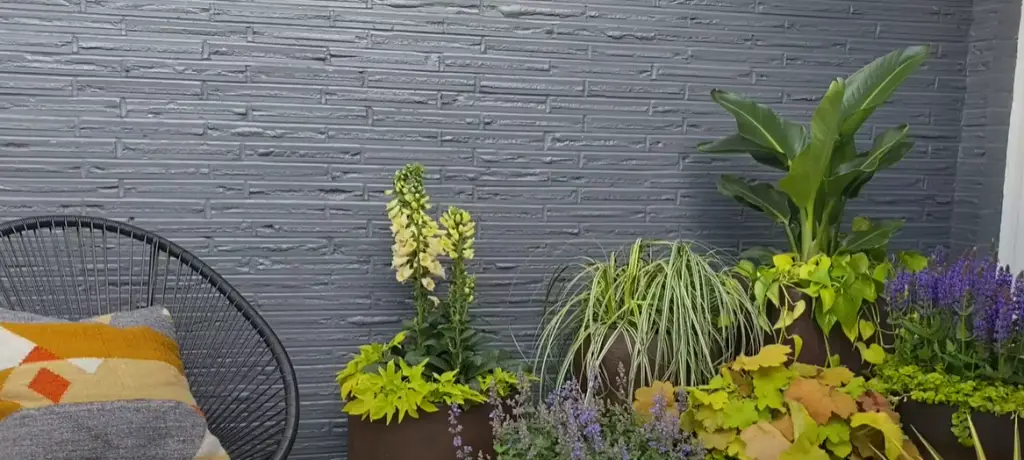
Finally, pick a good quality potting soil and fill each container to within an inch or two from the top. Make sure that all of your plants are securely planted in their containers and water them thoroughly after planting. To keep your garden looking its best throughout the season, remove any dead or dying flowers and foliage as needed, fertilize regularly, and provide adequate amounts of water during dry periods. Following these steps will help ensure that you get maximum enjoyment out of your beautiful container garden for years to come!
Designing Your Outdoor Pots Containers
Thrillers, Fillers, and Spillers
One of the best ways to design a successful container garden is by using the Thriller, Filler, and Spiller techniques. A thriller is a tall center plant that stands out and draws attention to your garden. Fillers are smaller plants that surround the thriller and give dimension and texture to your design. The spiller is a trailing plant that drapes over or trails down from your pot for an eye-catching effect. By combining these three elements in different combinations you can create beautiful designs perfect for any spot on your patio or deck.
Colors Textures
When selecting plants for your pots and containers, consider different colors and textures for visual interest. Colorful flowers can add vibrancy to your garden while foliage plants can add a variety of textures and hues. Evergreen plants, with their year-round color, are also a great choice for adding structure and interest. Consider using different colors and textures in the same container to create an exciting combination that will draw attention.
Scale Proportions
When considering pot size, it is important to keep scale and proportions in mind. A large pot requires larger plants or multiple small ones for the fullness. Smaller pots are better suited for one or two smaller plants or trailing varieties such as ivies and creeping thyme for a cascading effect. Be sure to select containers that match the size of your space – too large or too small of a container can throw off the balance of your design.
Soil and Drainage
The soil in your containers is extremely important for plant health. Container gardens generally require lighter soil than those used in garden beds. A light mix that holds moisture but drains quickly is ideal. This can be achieved by combining potting soil, compost, and perlite or vermiculite. To ensure good drainage holes should be placed at the bottom of all pots. Be sure to place a layer of gravel below the holes so that water does not escape too quickly.
Watering Maintenance
Proper watering is essential for keeping container plants healthy and happy. It’s best to check regularly and water when needed as plants in containers dry out faster than those in the ground. A thick layer of mulch is also recommended to help retain moisture and reduce weed growth. Finally, be sure to fertilize your containers regularly with a water-soluble fertilizer to keep plants looking their best. With these tips, your container garden will look beautiful all season long [1]!
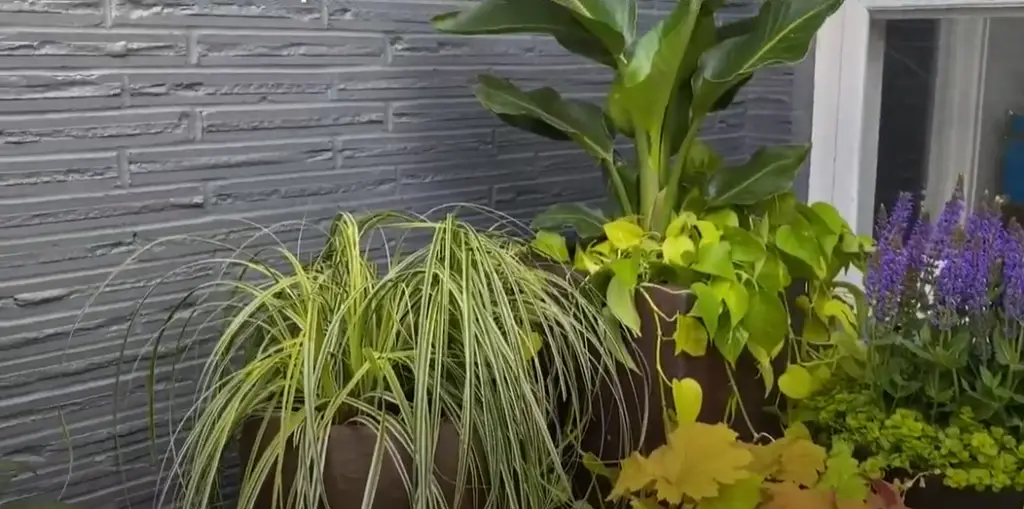
Tips to make the perfect container arrangement
Choose an “inspiration” plant
When creating a container garden, it is important to choose a specific plant or flower as your “inspiration” before beginning. This will give you an idea of what size and style of containers you should be using, as well as the types of plants that would best compliment your inspiration. The “inspiration” plant can be the center of attention or the backdrop to other plants in your arrangement.
Tie your container in with your existing landscape
When building a container garden, it is important to consider the existing landscape of your yard. Try to choose containers that are either similar in color or material to other pieces of outdoor furniture or the exterior of your house. This will create a unified look for your yard and ensure that the container garden feels like an organic part of the space.
Create height and depth
Try to create height and depth when arranging plants in containers by using taller plants as focal points and layering trailing plants below them. You can also add decorative items such as figurines, birdbaths, or wind chimes to give the container garden more depth.
Use contrast in color and texture to make an interesting arrangement
When arranging plants in containers, it is important to consider the texture and color of the plants you are using. Choose contrasting colors and textures to create visual interest. For example, pair a spiky succulent with a round-leaved ivy or combine a variegated leaf with an all-green plant. Another example of color contrast is to pair a bright yellow plant with a deep purple bloom. By choosing complementary colors, you can create an eye-catching arrangement that will draw attention.
Mix in some edibles
Edible plants are becoming increasingly popular in container gardens because they provide both beauty and sustenance. Many types of edible plants do well in containers such as tomatoes, peppers, herbs, and strawberries. Planting edibles in containers will also help to attract beneficial insects into your garden.
Keep it manageable
Although creating a container garden can be fun and rewarding, it is important not to get too carried away with planting too many containers. To avoid overwhelming yourself with maintenance, choose no more than five or six containers for your garden. This way you can focus on keeping the plants healthy without feeling overwhelmed by the task.
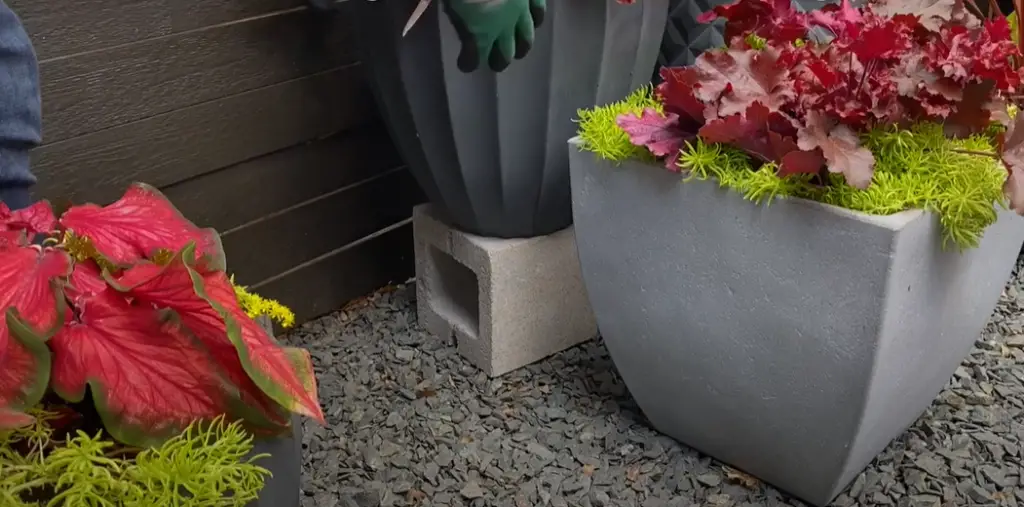
Be mindful of sunlight needs
Not all plants will require the same amount of sunlight so it is important to be mindful of this when choosing what plants to include in your container garden. Make sure to research which plants should be placed in full sun, partial shade, or full shade before adding them to your arrangement. Pay attention to where each container is placed about the sun as well and adjust accordingly if needed.
Add some humidity
Some plants, such as ferns and orchids, require more humid conditions than other plants. If you are planting these types of plants in containers, it is important to make sure there are ways for them to get the extra moisture they need. For example, grouping several containers together can create microclimates that trap moisture around the plants or you could add a layer of mulch on top of the soil to help retain water [2].
Other patio plant arranging tips
Create clusters of plants
Plants come in a variety of shapes and sizes, so you can create clusters or groupings of different types to add dimension to your outdoor space. This allows you to combine colors, textures, and heights for an eye-catching arrangement.
Mix up the Containers
Containers can be just as important as the plants themselves when creating a beautiful patio arrangement. Try using different containers like terra cotta pots, wooden planters, and hanging baskets for some variety. Mix up the colors and textures to add interest to your display.
Create pathways with plants
If you have enough space on your patio or deck, try adding pathways of potted plants leading from one area to another. This will create visual interest and make your patio inviting. Choose plants that will thrive in those locations, such as sun-loving or shade-tolerant species.
Add Accessories
Don’t forget to add some accessories to complete the look of your patio arrangement. A small fountain, wall art, wind chimes, or a trellis with vines growing up can all enhance the beauty of your outdoor space. Just be sure not to go overboard and clutter the area; keep it simple for the best results.
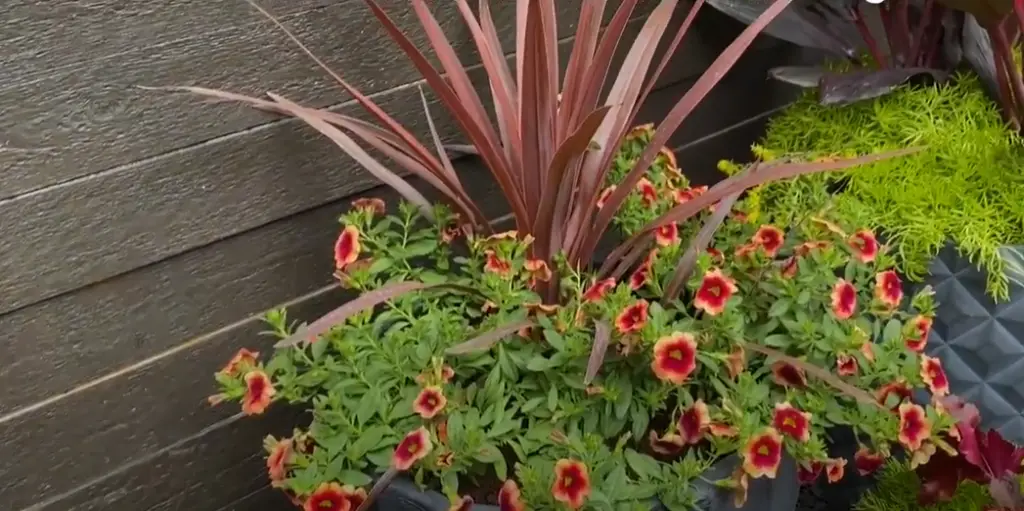
How do you work with lines and shapes when decorating containers?
Lines and feelings
When you decorate containers, lines, and shapes are two key elements that help bring the design together. Lines serve as basic building blocks of any design, providing structure and visual interest. You can use them to create dynamic compositions by emphasizing color, texture, or contrast. Additionally, they can be used to add emphasis on specific areas of the container or guide the viewer’s eye through the entire decoration.
Shapes are equally important when decorating containers. They form boundaries for each item in your composition, adding a sense of structure and order. Different shapes can also express different feelings such as calmness or excitement depending on how they’re used. The combination of both lines and shapes creates an interesting contrast while conveying the desired message.
Balance through resemblance
When it comes to combining lines and shapes, it’s important to keep balance in mind. You can achieve this by choosing items with similar properties such as colors or sizes. This helps create a unified look that won’t overpower the container itself. Additionally, varying the position of elements can also add interest to your design.
Visual illusions
The use of lines and shapes can also help create visual illusions. For example, you can use curved lines to suggest movement or a path for the eye to follow. Similarly, using different sizes or shapes can make certain areas appear further away than others. Lastly, overlapping shapes and lines can give your design depth by creating a sense of space within the container. By combining these elements in creative ways, you can create beautiful containers with unique decorations that will wow anyone who sees them!
Organic flow
When combining lines and shapes, it’s important to think about the overall flow of your design. A good tip is to try and create an organic shape when laying out elements in your composition. This creates a sense of movement which can draw the viewers into the decoration and make it more visually appealing. Additionally, overlapping items can help tie all of the elements together for a unified look.
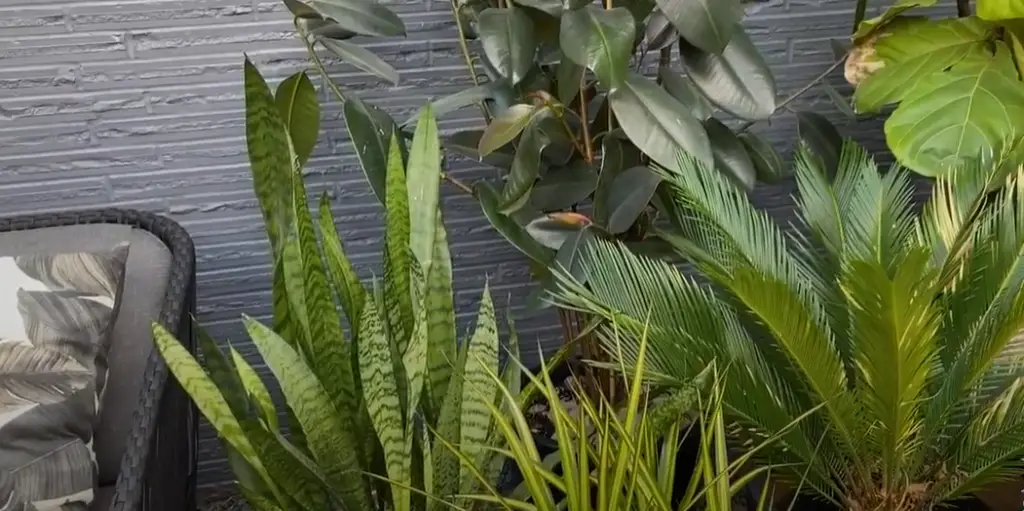
Sense of freedom
When decorating containers, it’s also important to create a sense of freedom. This can be achieved by leaving negative space between elements or introducing random shapes and lines into the design. Doing this will draw more attention to the overall composition and make it look less rigid. Decorating containers with lines and shapes is a great way to bring the entire design together.
How to maintain a pot garden?
Maintaining a pot garden doesn’t have to be difficult. With some basic supplies and a little bit of knowledge, you can easily keep your plants healthy and growing in pots for years to come!
- Choose the right size container: Select containers that are big enough for each plant’s root system but not so large that it will take too much soil and nutrients, or require more frequent watering.
- Use the correct soil: Potting mix is best for potted plants because it allows proper drainage and aeration. If you are planting multiple plants together, use a well-drained combination of peat moss, perlite, or vermiculite with a regular potting mix.
- Place the pot wisely: Place pots in an area that is free from strong wind and direct sunlight for most of the day.
- Water properly: Check your plants frequently to ensure they are receiving enough water, but not too much. The soil should be moist, but not soggy or wet.
- Feed your plants: Depending on the type of plant you’re growing, you may need to add fertilizer every few weeks to encourage healthier growth and blooming.
- Prevent pest infestations: Monitor your pots regularly for common indoor pests such as aphids, mealybugs, and spider mites – and treat them immediately if necessary!
- Prune judiciously: Trim off any dead or wilting foliage to keep your plants healthy, and remove any overcrowded branches.
- Re-pot regularly: Repotting every few years will ensure that your plants have access to plenty of fresh soil and nutrients.
Following these simple steps can help you maintain a thriving pot garden for many years to come! With regular care and attention, you’ll be able to enjoy the fruits of your labor in no time [3].
FAQ
How do I arrange my garden flower pots?
Arranging garden flower pots can be a great way to add interest, color, and texture to your outdoor space. Here are some tips for arranging garden flower pots:
- Start with the largest pot first – this will give you an idea of how much room you have for smaller pots.
- Group similar colors together – this creates a cohesive look that is pleasing to the eye.
- Place taller plants in the back and shorter plants in the front – this will create depth and dimension when looking at your display from any angle.
- Balance out large and small pots – having a variety of sizes helps create visual interest in your arrangement.
- Add other elements such as stones or shells – this gives your pots a personal touch and makes them stand out. Following these tips will help you create an attractive and inviting garden, full of colorful flower pots!

Do I need to water my garden flower pots regularly?
Yes, all plants require water to survive. Garden flower pots should be watered regularly, depending on the type of plant and size of the pot. Generally speaking, it is best to water them early in the morning or late at night when temperatures are cooler. If you live in an area with hot summers, you may need to water more often than usual. During dry spells, use a watering can or a sprinkler system to provide adequate moisture for your plants. Also, make sure that your soil has good drainage as over-watering can cause root rot and other issues.
What kind of soil should I use in my garden flower pots?
The type of soil you use in your garden flower pots will depend on the type of plants you are growing. For most flowering plants, a good quality potting mix is recommended as it contains all the necessary nutrients for healthy plant growth. If you are growing vegetables or herbs, soil specifically designed for container gardening may be better suited for their needs. No matter which type of soil you choose, make sure it has good drainage properties to prevent root rot and other issues from occurring. Additionally, it is important to fertilize your soil regularly with a balanced fertilizer to ensure optimal plant health.
What other elements can I add to my garden flower pots?
Adding other elements such as stones, shells, wood chips, or even small figurines can help give your garden flower pots an interesting and personal touch. You can also use these elements to create partitioned planting areas within the same pot if you wish. Additionally, adding mulch on top of the soil will help keep it moist and reduce weeds. Whatever you choose, make sure that all elements are safe for outdoor use and properly secured before displaying them in your garden.
How do I choose my pot garden plants?
Choosing the right plants for your pot garden is important to ensure they stay healthy and vibrant. Firstly, consider the amount of sunlight that your pots will get as this will dictate which type of plant you need to choose. If you are looking for low-maintenance plants, succulents, and other drought-tolerant varieties may be a better fit for you. On the other hand, if you love colorful blooms, there are many flowering plants available that can thrive in container gardens. Lastly, consider the size of your pot – some plants require more space than others so make sure to select one that fits within your pot size constraints.
How can I make my pots look nice?
To make your garden flower pots look nice, there are a few simple steps you can take. Firstly, consider the overall design of your pot garden – think about where it will be placed and how many pots you want to include. Secondly, choose plants that will thrive in the conditions available to them (e.g. sunlight). Thirdly, ensure you have good-quality soil as this is essential for healthy plant growth. Lastly, arrange your pots so they complement each other: group similar colors together and balance out large and small sizes for a cohesive look.

How do I make garden pots by myself?
Making garden pots by yourself is a great way to save money and get creative with your pot design. The easiest option is to simply use a small terracotta planter (or several of them) – you can paint it any color you like, add patterns or designs, and fill it with soil and plants. Alternatively, you can create more complex designs using different materials such as wood, metal, stones, and paper mache – the possibilities are endless! Just make sure that whatever material you choose is weatherproof as this will ensure its longevity in your outdoor space.
How to combine colors in a pots garden?
Combining colors in a pot garden can be a great way to add some interest and vibrancy to your outdoor space. The key is to play around with different shades and hues, so you don’t end up with a monochrome look. You could start by choosing one main color as the focal point and then adding other colors that complement it in smaller quantities. For example, if your main color is green, you could use blues and purples for contrast or oranges and yellows for brightness.
A combination of textures can also help break up the colors – try adding elements such as wood chips, stones, or gravel! Finally, make sure you keep an eye on how the light changes throughout the day – this will help you decide when the plants and colors look their best.
What plants go well together in pots?
When it comes to planting a pot garden, there are many combinations you can try. Some plants work well together in terms of growth and care needs (e.g. cacti and succulents), while others provide the perfect balance of colors, textures, and flowering period (e.g. annuals). For example, a mix of daisies, pansies, petunias, and marigolds would look beautiful in any pot garden with its varied colors and shapes. You could also add some herbs such as rosemary or lavender for scent or evergreen shrubs for structure – the possibilities are endless!
Useful Video: How to display garden pots in your garden, terrace or patio
Conclusion
Arranging garden pots is a great way to add color and life to your outdoor living space. Taking the time to carefully plan out the design of your garden pot arrangement will ensure that it looks aesthetically pleasing, as well as practical for you and your family. Planting low-maintenance plants such as succulents, cacti or herbs can help keep maintenance costs down while still providing a lively atmosphere. By taking into consideration the size and shape of your chosen pots, the layout of your backyard, and the type of plants you want to use, you can create an attractive and functional garden pot arrangement that will bring beauty to any outdoor area.
References:
- https://www.bhg.com/gardening/container/basics/how-to-plant-a-container-garden/
- https://www.prettypurpledoor.com/arrange-plants-in-containers/
- https://savvygardening.com/container-garden-maintenance-tips/





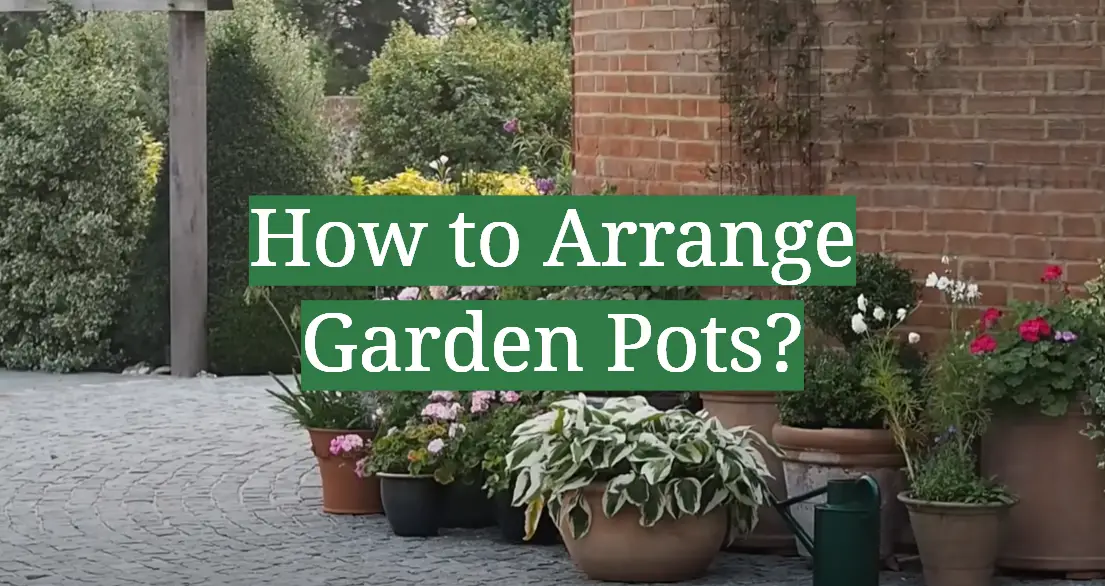


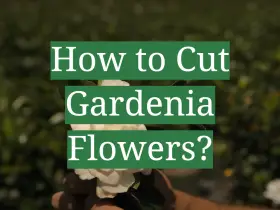
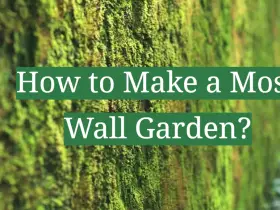
Leave a Reply
View Comments